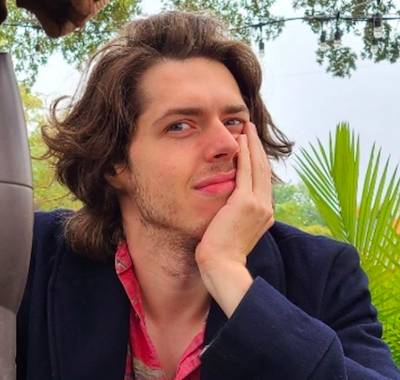How “Frankenstein” Costume Designer Kate Hawley on Dressing Men, Monsters, & Their Mothers
In a film in which a character will never know death, color and life are everywhere. Guillermo del Toro’s adaptation of Mary Shelley’s Frankenstein is a visual feast, yes, but as the director often puts it, it’s all nutritional. A luminous, dreamy red dress from del Toro and costume designer Kate Hawley means more than a pretty image.
The story begins with the mother, Claire Frankenstein (Mia Goth, one of her two roles in the film), in a blood-red dress that would bring any respectable house down. Death is present from the start. When she passes, her child, Victor Frankenstein (Oscar Isaac), grows up to carry her death with him. It drives his obsession with bringing life to death, to creating his unwanted son, the Creature (Jacob Elordi).
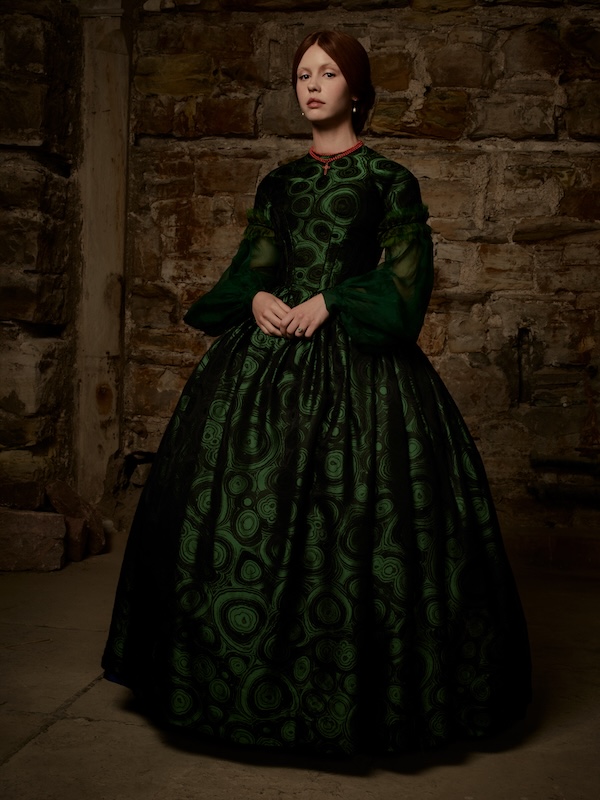
Frankenstein is an uncaring creator, a man who leaves his son to the wolves. If that sounds familiar, look at all the crucifixes Hawley and production designer Tamara Deverell pack into the film. “I’ve done three films now with Guillermo, but every time we are exploring the same language in a very different way,” Hawley said. “I think that’s what an artist does. There’s a pursuit of ‘what else could it be, and how else can I do it?’ My observation is that Guillermo illustrates what it’s like to chase the muse, to try and grasp that ephemeral thing.”
There’s a bit of a rock and roll star vibe to Victor Frankenstein with his eccentric hats and his colorful robes. Were rock stars an inspiration for Victor?
Absolutely, and that came from Guillermo right at the front. Certainly, Oscar brought that bravado in his physicality. The lecture scene is almost David Bowie as the Thin White Duke. My job first and foremost is to answer to my director, interpret his vision, and support the text. And then my next most important job is to support what the actor’s doing. And then there’s an alchemy that goes between that. I distill all of those things. A lot of it’s about the physicality, how they’re moving.


Photo Credit: Ken Woroner / Netflix
He moves a bit like a restless child.
Often, we have standbys on set who do an incredible job keeping everything beautiful and maintaining continuity. But with Oscar’s extreme physicality and the irreverence, we stopped fixing him in between takes. I was like, “That’s for pussies. Let him be.” And that became so much a part of his character interpretation. He had lovely clothes, but he wore them irreverently. They were crumpled. That, to me, is the ultimate kind of rock star language.
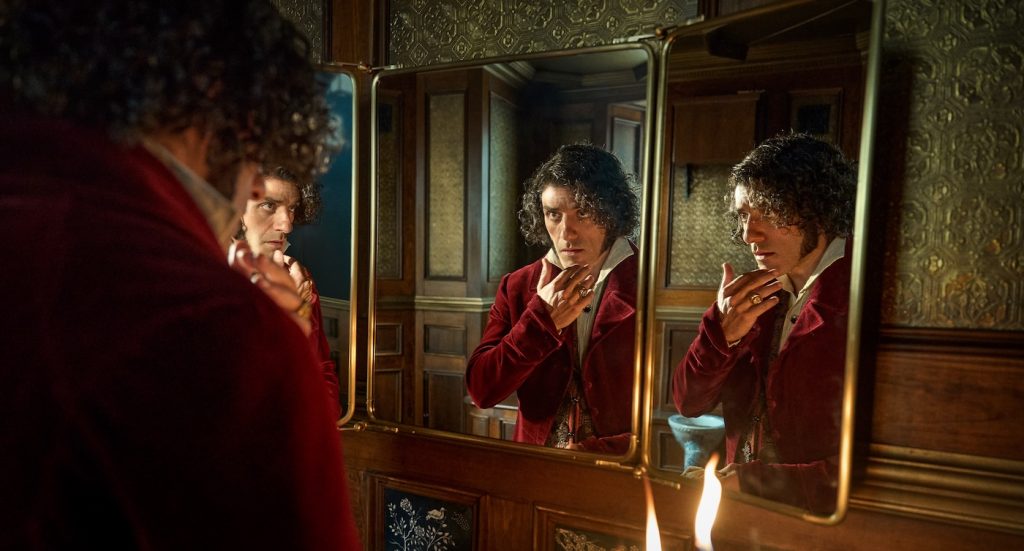
Beautifully disheveled.
Irreverently worn and beautifully disheveled. There you go. I quite like that one. [Laughs]
[Laughs] Among the main cast and all the extras, did you want an array of colors to reinforce the themes of life and death in Frankenstein?
Color’s a big part of Guillermo’s language as a director. There are motifs. He uses it very carefully, like the reds represent the mother throughout. We have that visceral red veil at the beginning, sort of a blood-red veil. That, to me, echoes the boy in The Devil’s Backbone, and it’s echoed in the coffin of Claire’s death face, and then you have the echo in Mia’s bonnet as Elizabeth in Victor’s apartment. The reds are carefully chosen. Victor’s red gloves echo his mother’s red gloves. And then – spoiler – it ends in a full circle at the end with the death of Elizabeth, with the blood red coming through. It’s the red and white that take you right back to the beginning again.
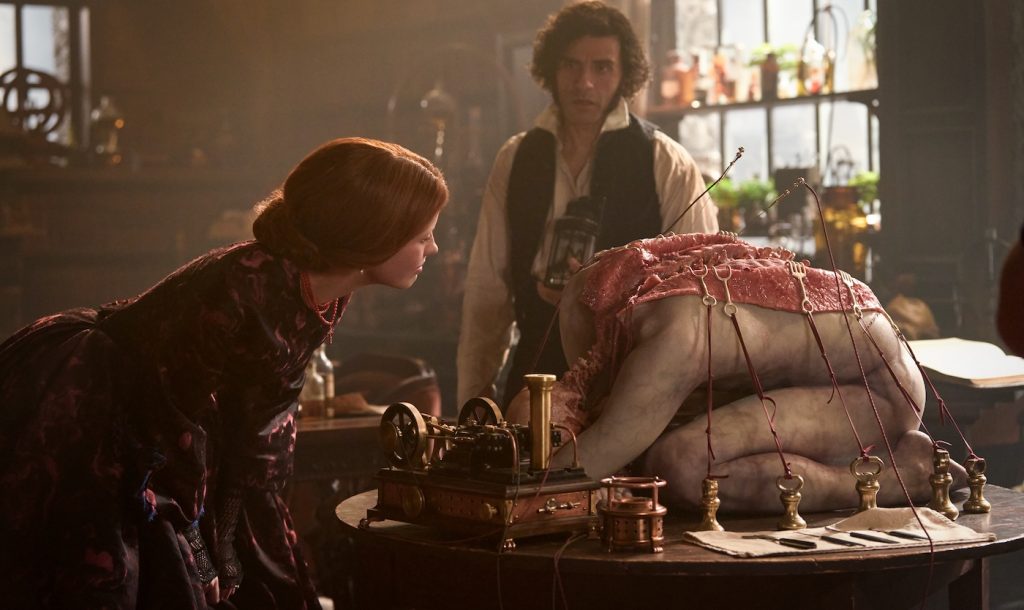
Any colors Guillermo didn’t want?
He did not want a black, Dickensian kind of seascape, with beautiful, baby-sea-like gorgeousness. He also talked about Hammer Horror and the films of Mario Bava, and that’s all part of his catnip. The challenge was to interpret these colors within a more gothic sensibility.
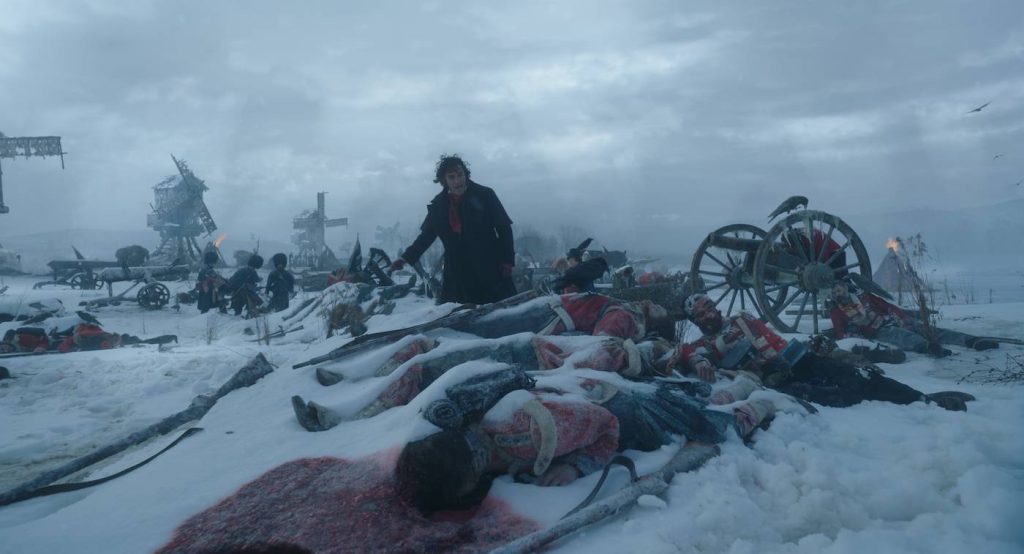
How do you accomplish that?
We’d already moved sort of from the Age of Enlightenment. The novel is originally set in this more contemporary world where the Industrial Revolution is happening. We’ve had surgical developments, which occurred during the Crimean War. It’s a time of great change. So it was to keep those feelings of the book, which were within the script: the atmosphere, the loneliness, and the melancholy. The reds were defined, but all those greens and the blues — did they have the tonal depth, as opposed to just being bright and saturated?
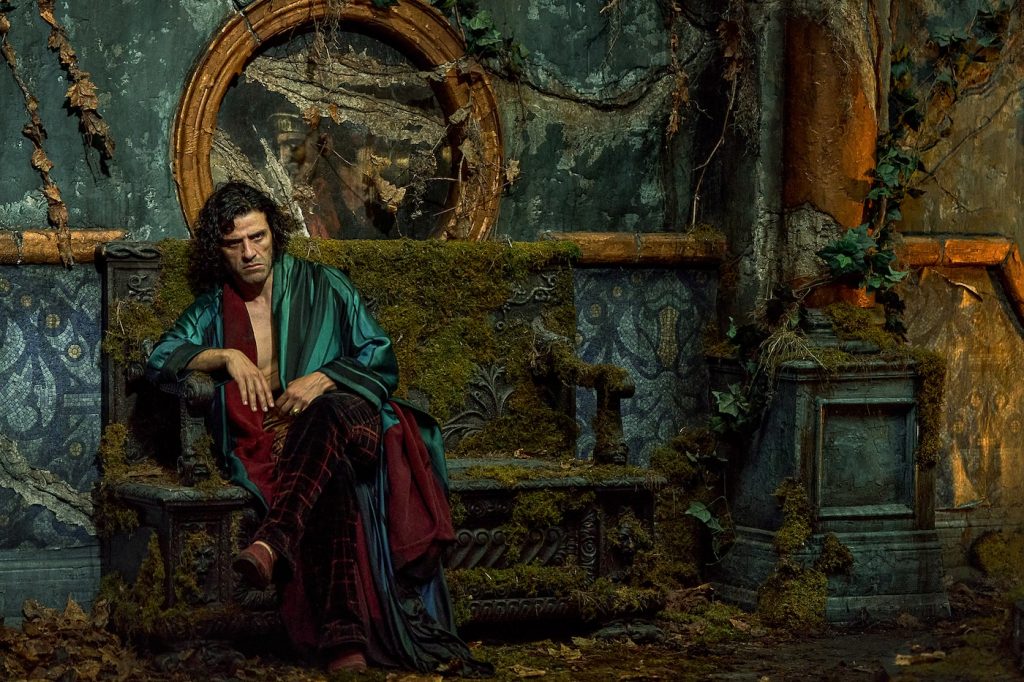
Artist Louis Comfort Tiffany was an influence there, right?
I’d been looking at the Tiffany archives and looking at how Louis Comfort Tiffany worked with Favrile. All part of the Art Nouveau movement. The colors are rich, but there’s a darkness that they paint with other colors. There are purples and greens together, blues and greens. It’s a painterly approach. And then, by using lots of transparent layers, by using patterns and textures, hopefully the intent was to keep the mood and atmosphere of nature always running through, and then these rich tones that have a more ephemeral feel.

There’s character to those colors, too. Victor’s gloves do make audiences think of his mother, but also that he has blood on his hands.
Absolutely. What I love about ideas like that is that they open the door to another idea, which grows into something else, and then someone in another department, like Tamara, will be doing something similar. We’re echoing each other all the time.
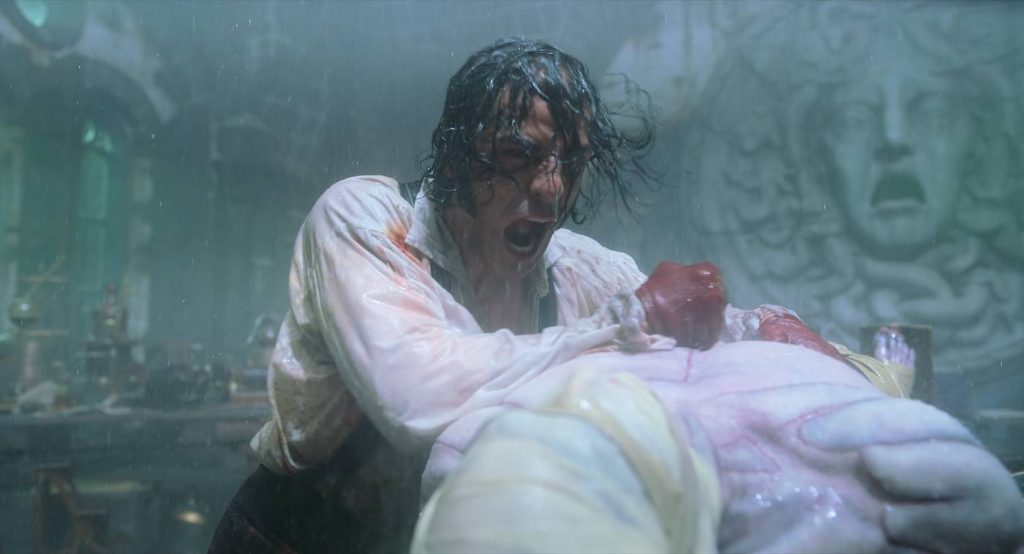
The circles are a great motif. We have the circles of the mirror images — the narcissus image — which was repeated in the circular architecture of the windows, repeated in the circular form of the Medusa, and repeated in the bonnets. There’s a lovely rhythm that is almost musical in terms of the visual language. And then you have his fabulous score at the end of it.

What did you want Elizabeth’s costumes to communicate about her place in society? How does she – through her costumes – connect with The Creature?
She’s a separate entity, almost a creature out of the norms of society. Guillermo wanted a more ephemeral quality to her. There’s a beautiful passage of text where they’re in the bistro and Victor picks up the book, saying, “Insects.” One of those was a book by 19th-century theologian William Paley, who discussed the theology of nature and argued that nature itself is a form of religion. She enjoys the beauty of nature in whatever form it is. Just like the animals in the forest look at the creature, they don’t see ugliness. They just see him.

She wears a red dress that echoes Claire as well.
There’s Mia as Elizabeth and Claire. She represents all these different echoes of women. To Victor, it’s Claire, the mother. Elizabeth is seen through Victor’s eyes — she’s an angel and mother, she’s Madonna. And then, as we approach the end of the film, she reflects more on the creature. And then you have the same relationship balance between Victor and the creature. They echo each other. We are doing this constant echoing of characters.

In the book, Mary Shelley describes The Creature simply picking up a cloak. For you, what silhouette did you want to strike when The Creature stands in the distance before the sun?
It’s that line, is it a beast or a man? The very first image, apart from the creation itself — and creation on the crucifix, so to speak — we did lots and lots of gestural drawings and explored what the overall silhouette would look like in the midst of the Arctic. Could it be a giant bear? Could it be a creature? The silhouette changes all the time. When he puts the coat on from the graveyard in the forest — the mass grave of dead bodies — he’s wearing the memories of another man. It’s like putting on another skin, so that it has a different silhouette. Then he just becomes bigger and bigger as he grows and becomes more powerful.
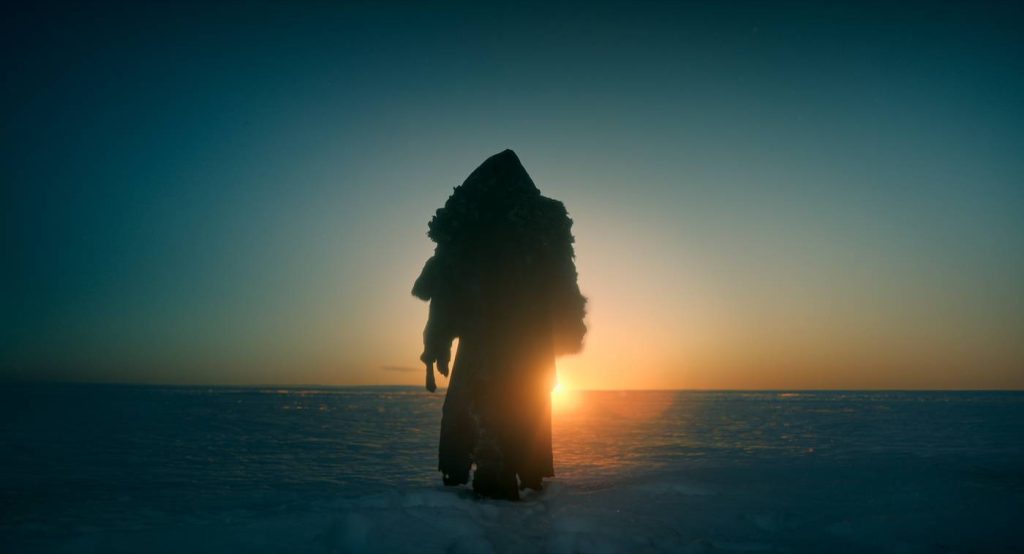
Frankenstein is in theaters and streaming on Netflix now.
Featured image: Jacob Elordi, Mia Goth. Courtesy Netflix.


